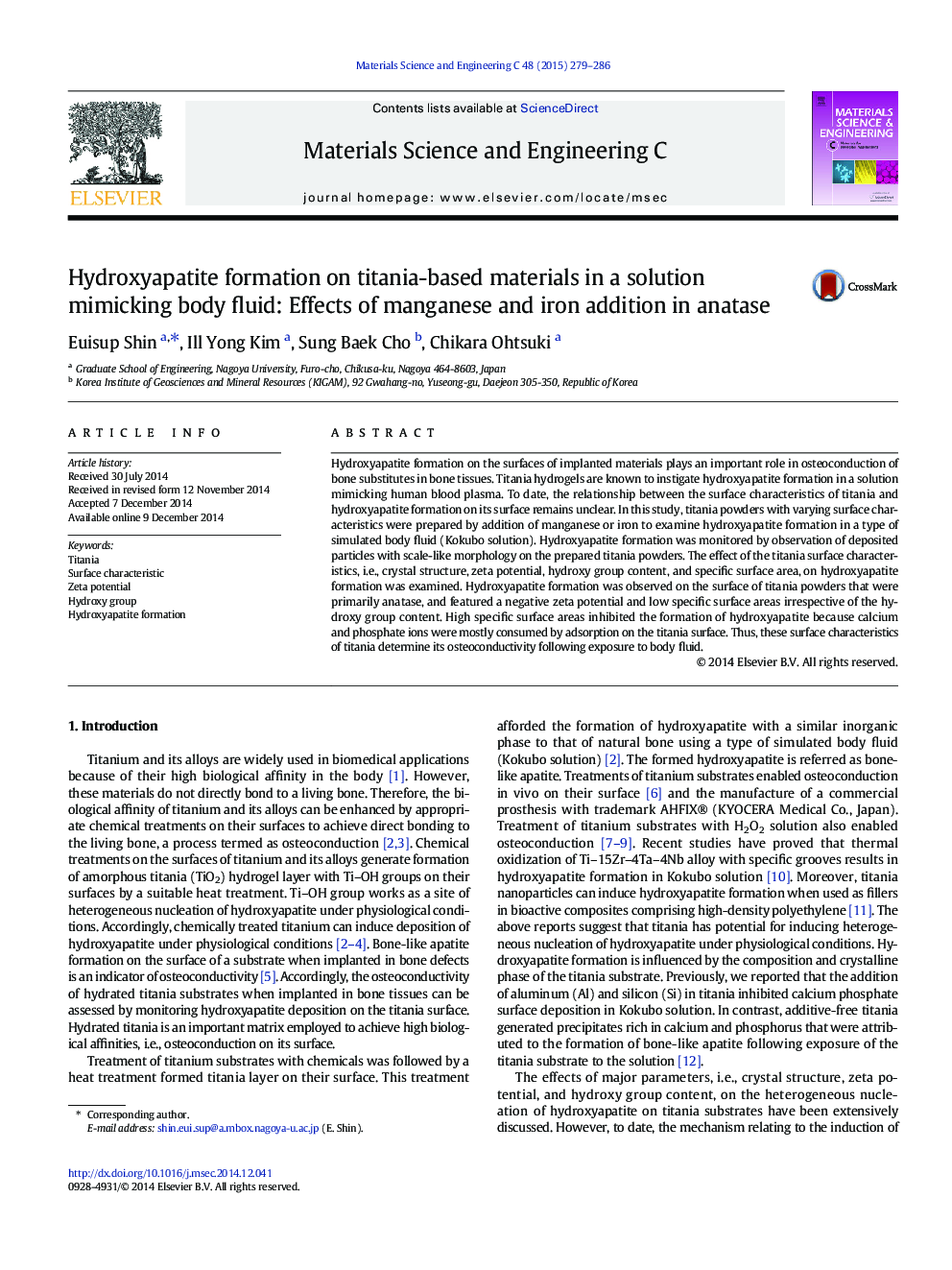| Article ID | Journal | Published Year | Pages | File Type |
|---|---|---|---|---|
| 1428458 | Materials Science and Engineering: C | 2015 | 8 Pages |
•Titania powders containing Mn or Fe additives were prepared using a sol–gel method.•Hydroxy group content, zeta potential value and specific surface area were controlled.•Hydroxyapatite-forming ability on titania was investigated using Kokubo solution.•Hydroxyapatite formation was discussed on the surface properties of titania.
Hydroxyapatite formation on the surfaces of implanted materials plays an important role in osteoconduction of bone substitutes in bone tissues. Titania hydrogels are known to instigate hydroxyapatite formation in a solution mimicking human blood plasma. To date, the relationship between the surface characteristics of titania and hydroxyapatite formation on its surface remains unclear. In this study, titania powders with varying surface characteristics were prepared by addition of manganese or iron to examine hydroxyapatite formation in a type of simulated body fluid (Kokubo solution). Hydroxyapatite formation was monitored by observation of deposited particles with scale-like morphology on the prepared titania powders. The effect of the titania surface characteristics, i.e., crystal structure, zeta potential, hydroxy group content, and specific surface area, on hydroxyapatite formation was examined. Hydroxyapatite formation was observed on the surface of titania powders that were primarily anatase, and featured a negative zeta potential and low specific surface areas irrespective of the hydroxy group content. High specific surface areas inhibited the formation of hydroxyapatite because calcium and phosphate ions were mostly consumed by adsorption on the titania surface. Thus, these surface characteristics of titania determine its osteoconductivity following exposure to body fluid.
